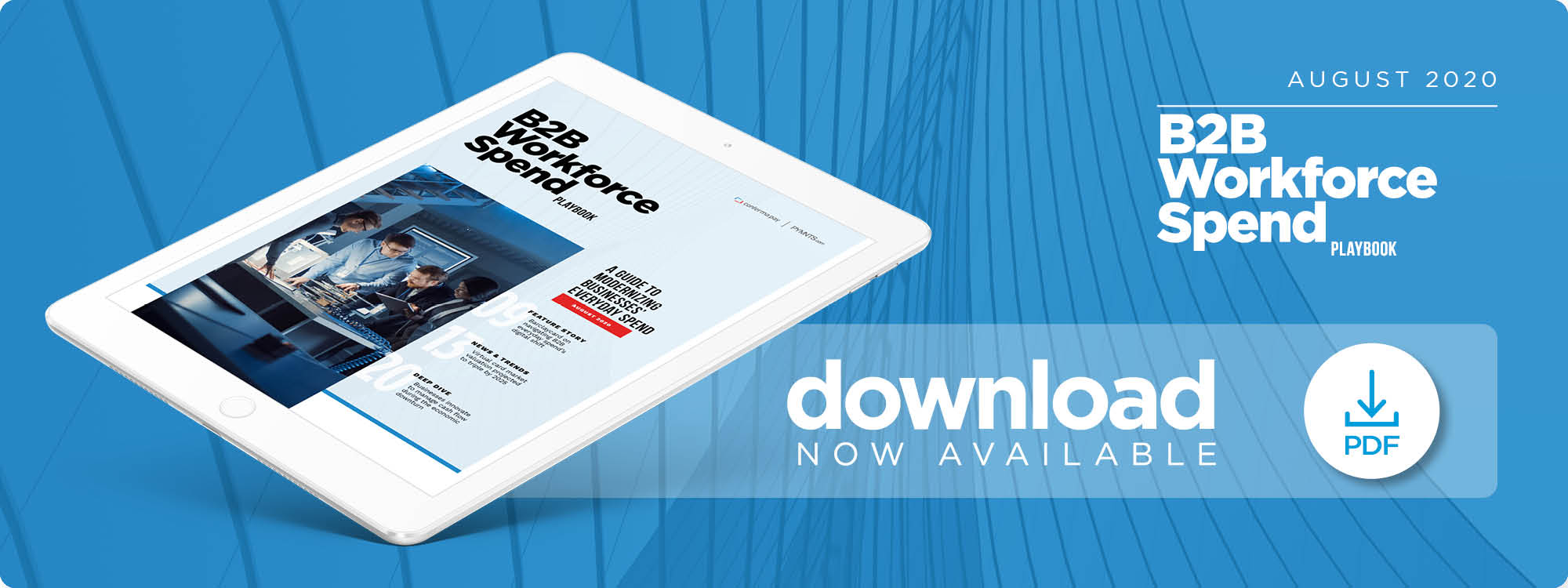Barclaycard On Everyday Spend Management And The Digital Shift

Remote workers use many digital tools to remain productive while away from the traditional office – except when it comes to managing work-related expenses. There, Maria Parpou, chief product officer at Barclaycard, the invisible bank of the employee still rules. Parpou explains in the first B2B Workforce Spend Playbook how companies are using mobile apps and virtual cards to streamline spend – and keep it in check.
Workers of a past era used to submit expense reports on paper.
Permanent staff members would use personal funds to pay for travel expenses and office supplies during this time, collecting paper receipts to turn in to administrative or finance teams at the end of the month. Workers would then be reimbursed, but only if they had been careful to abide by company policies and lucky enough not to lose their receipts.
That series of processes was the norm before the pandemic.
The traditional office environment has since been flipped upside down, with more individuals than ever working remotely and no longer able to walk down a hallway to an accounting department. The show, so to speak, had to go on — workers still had to purchase supplies, and businesses had to find new ways to ensure that their workers had the funds they needed.
It was in this environment that interest began to spike in digital everyday spend solutions: virtual cards, spend controls and analytical tools that could help companies provide digital options to manage their day-to-day expenses and reduce the frustration, paperwork and manual effort required to submit expense reports to finance. Such systems may have gained popularity during the pandemic, yet according to Maria Parpou, Barclaycard’s chief product officer, these innovations are poised to outlast the public health crisis that made them necessary.
Parpou discussed in an interview with PYMNTS how the pandemic is creating unprecedented demand for digital improvements to legacy spend management systems and how such advances could change what constitutes everyday business spend for good.
Going Digital To Stay Remote
The pandemic is forcing many businesses to rethink their day-to-day business expenditures. Governments and companies across the globe began instituting stay-at-home and shelter-in-place orders to slow the spread of COVID-19, and many businesses followed suit by encouraging staff to work safely from home. This dramatically shifted their professional purchasing habits.
“I mean, you [are] really [moving] a whole office function into your home,” Parpou said.
This resulted in many entities — Barclaycard included — seeing their staff members purchasing everyday office supplies they needed to work effectively. Workers’ spend on printers, pens, calculators and monitors increased as a result.
The changes wrought by the pandemic are unlikely to stop there, Parpou cautioned.
“The other thing that we will start seeing, I believe, more and more as companies reconfigure — whether they are going to be five days a week from home or only sort of from the office or only one day a week in the office — I can envisage that people will start not congregating around the office and therefore they will start expensing [trips] into the office,” she said.
Individuals that spend less time in the office and more time working from home will likely need to be able to supplement their professional spending with company funds — particularly if they are in entry-level positions. Individuals who occupy lower rungs on the corporate ladder are less likely to have expendable cash for purchasing office supplies and making other daily business transactions.
Businesses are also simultaneously facing increased financial pressures to tighten their belts in a growing economic crisis. Firms will therefore be incentivized to adopt spend control systems to ensure that their workers do not spend indiscriminately outside of company policy.
“I think expenses in general will come under scrutiny, given that the economic situation has hit a lot of companies [hard],” said Parpou.
The economic and public health pressures have thus created a professional environment ripe for digital everyday spend innovation. Virtual solutions that can trace and track individuals’ spend and provide remote access to funds for critical supplies are perfectly poised for adoption in this new, digital-first home office ecosystem.
Adding Value To A Post-Pandemic Marketplace And Beyond
Parpou said she believes that digital spend management tools have the potential to become long-lasting. It is still unclear whether the post-pandemic workforce will be primarily remote or on-site, but the potential benefits of implementing a decentralized virtual spend management system extend beyond providing individuals with the funds they need to perform their jobs effectively from the safety of their homes. Decentralized and digital everyday spend management solutions can fundamentally make daily work expenditure easier for both companies and their workers.
This fact is apparent from the digital shift triggered by the pandemic. The health crisis, by making remote work a necessity, exacerbated all the shortcomings of legacy paper-based everyday spend systems. Filling out and manually submitting expense reports had always been a hassle, but many companies were reluctant to move away from such systems in favor of digital alternatives until the pandemic rendered paper processing unfeasible.
“[To sum up the difference between] the system that we had before and the system that we have after [the pandemic began], what the new digital way of expensing provides you is an approval before the expense,” Parpou explained.
This can both eliminate the need for individuals to retroactively recount their monthly spending to their employers and reduce the accounting uncertainty associated with not knowing how much staff members will spend in any given month.
The idea of having a semi-permanently remote workforce that uses company funds to pay for its business expenses has also opened the door to a new kind of “office perk,” according to Parpou — one that might be more in line with the type of lifestyle remote workers prefer.
“Now, a lot of progressive companies might start switching and saying, ‘Actually, you know, I’m not going to offer you office space, but these are some of the perks that I’m willing to offer you,’ and that could be a recruitment attraction going forward,” she said.
Digital spend management tools thus have the potential to not merely handle the simple purchase of office supplies but have a significant effect on retention. These tools’ benefits just might keep them top-of-mind for many companies long after the pandemic has subsided.

